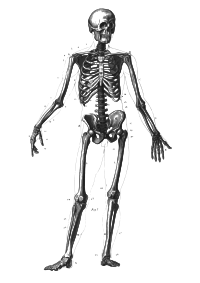In our previous articles we discussed how hepatitis is a general term for inflammation of the liver. It can be caused by a number of conditions, including autoimmune diseases, drugs, and alcohol. There are also several viruses that specifically attack the liver. In this article we will discuss the three most common viruses which cause hepatitis A, hepatitis B and hepatitis C, respectively.
Hepatitis A
Hepatitis A was formerly called infectious hepatitis and accounts for approximately half of the cases of acute hepatitis in the United States. It is transmitted through ingestion of food or water that has been contaminated by feces containing the virus (fecal-oral route). It can also spread through a household by contact with oral secretions resulting from intimate kissing or contact with stool due to poor hand washing. Children in day care centers and customers at restaurants lacking sanitary precautions such as hand washing are also at risk of contracting hepatitis A. Hepatitis A is endemic in some parts of the world and travelers to those areas are at increased risk.
Signs and symptoms include malaise, jaundice, nausea and poor appetite which develop two to three weeks after contact with the virus. Some patients will develop dark, coca cola colored urine and light stools. A blood test for an antibody to the virus confirms the disease. Hepatitis A does not become chronic and patients develop immunity after having the infection. There is a vaccine to prevent Hepatitis A which consists of two injections given 6 months apart.
Hepatitis B
Hepatitis B was formerly called serum hepatitis before it was known that it could be spread a number of ways, including by sexual contact, sharing of contaminated needles by drug users, accidental needle sticks and blood transfusions, as well as from mother to newborn. Many young people today are not aware that hepatitis B (and hepatitis C) can be spread by tattoos, body piercing and by sharing razors and toothbrushes. Approximately one quarter million individuals in the United States develop hepatitis B each year.
Approximately one to four months after exposure, patients develop symptoms similar to those noted above for hepatitis A. Diagnosis is confirmed through blood tests for antibodies to the virus, but interpretation of these tests can be complicated. For most patients, the infection clears by six months, but approximately 10% will develop chronic infection lasting beyond six months. These patients are at risk of cirrhosis, liver failure and liver cancer and remain infectious as long as they have the virus in their blood. It is estimated that 200 to 300 million individuals throughout the world have chronic hepatitis B.
Management of hepatitis B consists of close monitoring, treatment of complications, antiviral therapy and liver transplantation, when necessary. Hepatitis can now be prevented by vaccine, which is recommended for all newborns, as well as children and adolescents who did not receive it previously, and others at risk for contracting hepatitis B.
Hepatitis C
Most individuals with hepatitis C are not even aware that they have it. It is thought that two thirds of those in the United States with the disease are baby boomers who shared contaminated needles while using drugs twenty to thirty years earlier. Some individuals with this infection may have only used IV drugs on one occasion many years previously. During the ensuing years after initial exposure, the virus slowly and steadily damages the liver. Hepatitis C is now the most common blood borne infection in the United States with nearly four million individuals infected and 170 million worldwide.
Most individuals infected with this virus have no symptoms, even though they do not clear the virus from their bloodstream. Approximately 85% will develop chronic infection and can pass the infection on to others. Of these, approximately 25% will develop cirrhosis over the next twenty years. Approximately 5% of these patients will develop liver cancer each year.
Hepatitis C used to be called non-A, non B hepatitis before the hepatitis C virus was identified. An antibody test now confirms the diagnosis and is used for screening those at risk for the infection. In addition to anyone who has ever injected illegal drugs, others at risk include health care workers who have sustained accidental needle sticks, those on hemodialysis, those who received blood transfusions before 1992 when the screening test became available and babies born to infected mothers. Transmission through sexual contact is thought to be rare. Young people with tattoos and body piercing are at higher risk of having hepatitis C.
Treatment consists of interferon and ribavirin which clears the infection in about 40% of cases depending on the genotype, but not without significant side effects. Hepatitis C is the leading cause for the need of liver transplantation. Recently, several new drugs have shown promise in the treatment of hepatitis C. Patients with the infection should avoid alcohol and other agents that can damage the liver. If you fall into one of the categories for those at risk of harboring this insidious infection, check with you personal physician to discuss whether you should be screened with the antibody blood test for hepatitis C.
